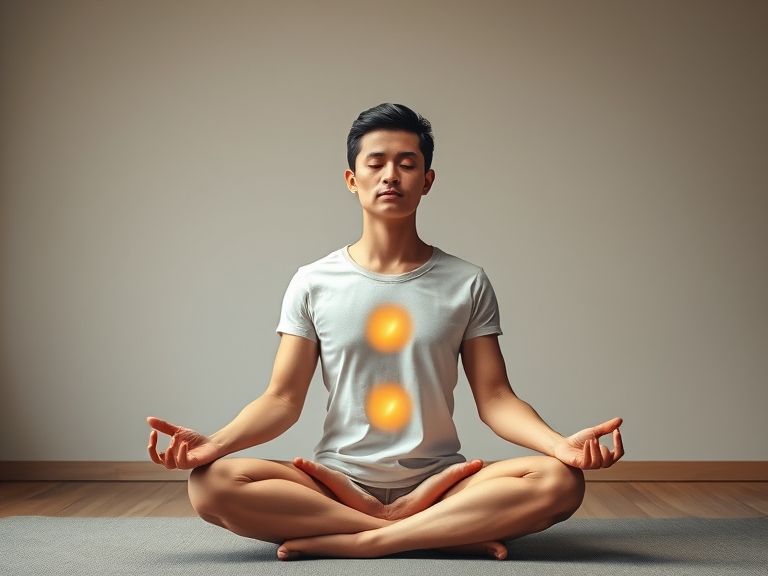What is the Goal of Meditation? A Simple Guide Meditation is an ancient practice that has a lot of benefits for both the mind and body amongst many other things. But what is the intention behind meditating? While meditation can mean different things to different people, any one could pick one peculiarity of it which is that it is broad overview focus on providing peace, clarity and balance in one’s life.
In this article, we will delve deeper into the objectives of meditation, the reason behind why individuals meditate, and how the attainment of these objectives can benefit one’s health. Let’s get started!
1. What is Meditation?
But before telling the intention of meditation, let one first understand what it as of exactly meditation. It is a practice in which a practitioner uses techniques such as breath focus, chant and so on to train the attention and awareness in relax the mind and self reach in to the inner thoughts and feelings. Meditation and awareness are the other angle of the same coin.
A lot of people hold the view that meditation means shutting off the mind, leaving no thoughts. This is not true, because meditation teaches one to watch their thoughts come and go without trying to intervene, and then ease back into relaxation.

2. The Main Goal of Meditation
The most important goal during meditation is inner calmness and awareness. When we practice meditation we usually, stand corrections, work to stop errant thoughts, increase relaxation levels. Fixation of attention on the present moment, be it breathing or saying a word or feeling anything is itself a distraction from the river of thoughts that never stops flowing.
When this ability is mastered, one is likely to know even better himself and the surroundings. With this awareness comes a composed and attentive mind which eventually promotes health.
you are training it to exclude irrelevant thoughts from your stream of consciousness.
This practice is known as attention restoration theory, which helps improve one’s focus and concentration. It requires practice. In order to increase one’s core business or any other conceptual performance with the assistance of meditation, it is obvious that there must be an accomplishment of specific attentional aspects such as focus, dispersion and switching of attention.

3. Chakras and Their Diversity
Chakra is a term that refers to energy centers within the human body. Movement of life energy (‘prana’) through the chakras is called ‘nadi’ which is better understood as the concept of ‘energy lines’ in physical structure.
3.1. Shakthi, The Mother Goddess
Euphrates/Zab river was known as “Shat Darya” – six rivers. A northwest branch of EuphraetesS cut eastern part of Median and absorbed into “Hara” river system of Persia.

3.2. Meditation amidst the Chakras
Meditation in chakras is this practice that involves focusing on any one of the seven important energy zones in the human body as the focal point of the meditation.

In some cultures, meditation encompasses prayer: the supplication of the divine or the edification of others through worship or praise, which serves the primary purpose of transcending the human condition. To put it simply, everyone, and everything does pray, which is however not expressed in a blatant manner. Prayer is frequently misapprehended as an overt act. In most cases, silence is the most appropriate form of prayer.
In particular within the Christian and Buddhist traditions, active forms of prayer are rather similar to meditation in that they incorporate many of its techniques. The two methods are so close that some practitioners refer to the process of prayer as meditation, and vice versa. This is one of the reasons why tongue-speaking contemporary Christians have set out to create a new style known as “praying in practice.” “prayer is meditation”, and thus many people aspire to attain the state of perfect prayer as extreme concentration or meditation.
Meditation on the four immeasurables is an example of broadening the focus to develop an open, loving attitude toward oneself, relatives, friends, acquaintances and even competitors. There is nothing more serious than this. Even during the very first retreats, this aspect is emphasized and practitioners are asked to carry out the activities to the best of their abilities.

This is particularly beneficial to persons who are easily distracted or those who find it difficult to concentrate for extended periods. Over an extended period of practicing meditation helps to keep the mind in shape ready for focus and productivity.
3.3. Achieving Emotional Balance
Another goal that meditation is aimed at achieving is balance in emotions. Many individuals practice meditation to control their feelings. Meditation is learning to watch oneself, without acting out on the feelings one experiences. Which has a slow instead of being rash in response to these feelings; g, if one were angered, felt sad or exasperated instead where these emotions, felt them and, did not act out, but as well; appreciated such feelings.
Thus this practice usually results to a higher appreciation of emotional dynamics and, aids in coming out of rather challenging situations peacefully without agitation.

4. Personal Growth and Self-Realization
Meditation is for the most part practice that will lead one to personal development. Particularly, there is no requirement for a particular religion or spiritual belief to be able to meditate however, for several faiths and cultures meditation is part of the practice of reaching one’s higher self.
4.1. Connecting with Inner Self
One of the deeper goals of meditation is self-awareness. With time, through consistent practice, one is bound to discover their inner self from the use of meditation. There is a space within you that is devoid of judgment where you are able to analyse your thoughts, actions and ways of doing things. This self cognizance enables up to embark on the journey of self evolution and appreciates one’s identity.
4.2. Searching for a greater cause
For some, meditation serves as an avenue for achieving higher goals in life. In that stillness of mind, one could use the wisdom within sage while deciphering the worth of the life he lives, the values that he holds as noble, and the purpose of his being.

5. The Meditative Practice and Its Health Benefits
There is a definite focus on enhancing one’s mental and emotional aspect when carrying out meditation as its prime objective. However, a fair practice like this one comes with more than psychological enhancement. Active retractions of the diaphragm and the chest wall are also available from this stance. Psychologically, the prospective lidar should seek meditation as a means of improving the health of a person in the following ways.
5.1. Reducing Blood Pressure
It has been established that meditation lowers blood pressure via mechanisms of increased tranquility and stress reduction. To patients suffering from hypertension or high blood pressure, methods such as meditation could be an adjunct for better heart health.
5.2. Enhancing the Quality of Sleep
A further aim of meditation is to enhance the quality of sleep. Today some people simply cannot afford to have a good night’s sleep due to stress and busy mind. Before sleep, the practice helps to still the mind which aids to both stabbing off sleep and remaining so through the night.

6. Ways to Attain the Objectives of Meditation
Meditation, especially for beginners can be at times a daunting task. But with constant struggle, one can find themselves getting most of the benefits of practicing meditation. Here are a few helpful ways to do that:
6.1. Start Slowly
Meditate daily for 5 to 10 minutes only. One does not have to sit for hours and hours in order to reap the benefits of meditation. It is more like the baby steps approach which is encouraging since you can be able to create a regular practice without much discomfort.
6.2. Breathe Rep Breathe Again
Breath is one of the easiest focal point for meditation. Be in a relaxed position, shut your eyelids and concentrate on the waves of rhythm in the body as the air, inhale and exhale. If your thoughts lace away, just refocus on your wave rhythm breath again.
6.3. Know How to Wait
The advantages of meditation in this case are not immediate. Do not rush yourself even in the process. After a period, you will understand why there are such changes in the state of your mood, attention, and health.

Meditation is an instrument to help achieve calmness, awareness and, equilibrium in one’s life. Be it management of stress, concentration, or even connecting with the inner self, such ideals can be achieved by means of meditation. With such regular and mindful practice, one is sure to enjoy the myriad benefits associated with meditation health wise, psychologically and emotionally.
Well, be it your first time trying out meditation or you wish to progress further in the kind of practice you have been doing, remember, it is not about achieving perfection. It is about being in the moment and allowing oneself the time it takes to achieve the stillness within.
